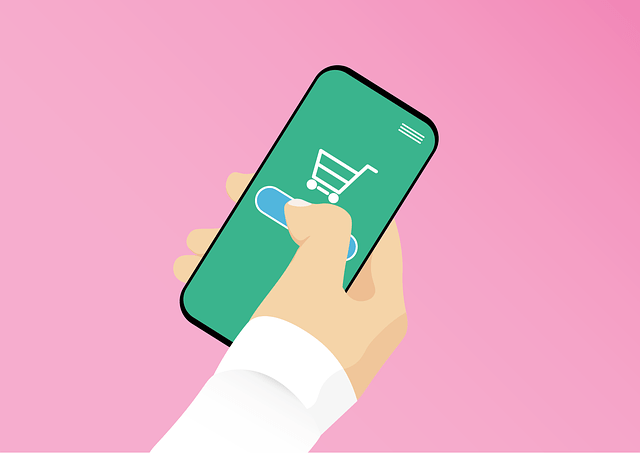Online retailing is a fiercely competitive industry, and it can be incredibly daunting to try and compete with the e-commerce giants. The good news is that there are several strategies any online retailer can use to gain an edge over the competition.
This article will examine how smaller online stores can level the playing field and compete successfully with the biggest names in e-commerce. Through careful planning and implementation, even the smallest online store can succeed in today’s digital landscape.
Table of Contents
E-Commerce Giants and Strategies for Competing
With the advent of technology, e-commerce has revolutionized the way we shop. From Amazon to eBay and Walmart, these e-commerce giants have become some of the most recognizable names in retail today. However, for small business owners, competing with such big players can seem like an impossible task. But some strategies can help online retailers level the playing field and make their businesses stand out from the competition.
To start on the right foot, it’s essential to focus on building a strong online presence. This means having a user-friendly, visually appealing website and engaging customers across various social media platforms. Additionally, developing innovative marketing campaigns is essential to make your business stand out from its competitors. Use promotions and special offers to attract new customers while providing incentives for returning customers to keep them returning for more.
Leverage Niche Markets
Niche markets are specialized consumer groups that share common interests and needs. Identifying these niches and providing products tailored to their specific wants and needs allows small retailers to stand out from larger competitors. This lets smaller businesses capture market share that would have otherwise been overlooked. Additionally, targeting niche markets allows for the customization of product offerings at scale – allowing smaller companies to stay nimble enough to respond quickly to changing customer demands.
Capitalizing on niche markets can be an excellent way for online retailers with limited resources to compete with large e-commerce companies successfully — while remaining profitable in the long run.
Utilize Social Media
One of the most effective ways to reach potential customers is through social media marketing. Using social media sites like Twitter, Instagram, Facebook, and YouTube can build relationships with your customers by giving them a more personalized experience.
Facebook is one of the most popular social networks in the world and presents an excellent opportunity for small online retailers. With its large user base, Facebook allows businesses to create targeted campaigns that engage potential customers through ads and posts. Facebook also allows entrepreneurs to create business pages that serve as a platform to showcase products or services to boost sales.
Instagram is another great platform for small businesses seeking exposure on social media. It allows users to share photos and videos on various topics. With Instagram, businesses can create brand awareness and build a community of followers interested in their products or services.
Social media provides an excellent platform for businesses to promote their products and services engagingly. Through creative visuals and captivating content, businesses can create a strong presence on various social networks that will help increase their customer base. Social media also enables retailers to interact directly with customers and provide real-time customer service support, building trust between buyer and seller.

Focus on Customer Experience
As the world of online retail continues to grow, it is becoming increasingly important for retailers to focus on providing a positive customer experience. This experience should encompass all aspects of the customer’s interaction with an online store, from browsing through products, making a purchase, and returning an item if necessary. To stay competitive in today’s market, retailers need to know how their services can give them an edge over e-commerce giants such as Amazon or Walmart.

Retailers should use customer feedback to help identify areas where they could improve customer experience. What do customers like or dislike about the current checkout process? Are there any elements that are confusing or require too many steps? Additionally, every retailer should ensure that their website is easy to navigate and contains accurate information and images that reflect what will be delivered once purchased.
Offer Unique Products
One key way to stand out from the competition and increase sales is by offering unique products or services. Unique products or services can help you attract customers looking for something specific who can’t find what they need elsewhere. This could range from custom items like personalized mugs or posters to limited edition merchandise from your store. Additionally, providing access to rare products such as vintage clothing, antiques, or old books could be a great way to draw customers in and keep them coming back for more.
Price Matching
Price matching is an essential strategy that online retailers can use to compete with large e-commerce giants. By giving customers the same product at the same price as their competitors, retailers can gain an edge over them and make more sales. Price matching not only gives customers assurance that they are getting the best value for their purchase, but it also helps level the playing field for small and independent retailers whose larger e-commerce sites, in terms of resources or marketing budgets, may outmatch.
Several key points must be remembered when considering implementing a price match policy. First, the store must determine what products or services will be price-matched. Also, store owners must decide if they will offer discounts to all of their competitors or just some of them. They also need to decide what kind of proof (like a screenshot of the competitor’s website) they will need from customers who want a price match.
Special Promotions & Discounts
Small businesses can level the playing field with major e-commerce players by understanding how to craft creative deals and incentives. When promoting, it’s essential to consider what kind of incentive will appeal to the most people. For instance, offering free shipping or discounted prices on certain products can be attractive for cost-conscious shoppers. Additionally, retailers should look into loyalty programs and bundle packages that encourage customer retention. These strategies can help customers develop a sense of value and make them more likely to choose your store over competitors.
Leveraging Discounts to Increase Sales
Leveraging Discounts to Increase Sales is key for online retailers competing with e-commerce giants. Offering discounts and promotions can effectively increase sales, as it entices customers to purchase more while also providing an incentive for them to return in the future. However, there are specific techniques that online retailers must employ when leveraging discounts to maximize their impact on sales and customer loyalty.
Creating Unique Promotional Offers
One technique that works well is offering exclusive discounts to loyal customers or those who subscribe to your email list. This could be in the form of a coupon code or free shipping, and it gives customers an incentive to shop with you over competitors. Additionally, consider offering rewards for sharing products on social media or referring friends – this can help increase brand awareness and bring more potential customers.
By creating unique promotional offers tailored specifically to your business, you will be able to differentiate yourself and attract new shoppers while keeping loyal ones coming back again and again.
Taking Advantage of Flash Deals
Flash deals are a great way to reach customers looking for discounts and offers. By offering exclusive discounts with limited time frames, you can draw attention to your store and entice customers who might otherwise pass you by.
Flash deals can be used in many different ways. For example, you might offer discounted prices on specific items or bundles of products, set up special offers related to specific events or holidays, or even create a subscription service where customers receive exclusive benefits throughout the year. Whatever strategy you choose, taking advantage of flash deals will help you stand out while ensuring you maximize profits during peak shopping.
Utilizing Email Marketing for Special Offers
Email marketing is one of the most effective ways for online retailers to compete with e-commerce giants. Through targeted email campaigns, small business owners can create special offers that draw customers away from big box stores and back to their online stores.

Online retailers should take advantage of the ability to personalize emails by segmenting customers according to demographic information and purchase history. With this data, small business owners can craft highly specific offers that appeal directly to the needs of their target audience. For example, an apparel store may send out an email highlighting new arrivals to shoppers who have purchased items in the past. In contrast, a toy store might offer discounts on new releases or upcoming holiday specials only through emails sent exclusively to loyal customers.
In addition, retailers should consider sending out newsletters to keep customers informed about news related to their industry and any related products or services they provide.
Making Use of Social Media to Promote Discounts
By offering discounts through popular platforms such as Instagram and Twitter, small online retailers can attract customers who may have otherwise overlooked them.
When using social media to promote discounts, one should create an engaging post that will capture attention while providing relevant information about the offered item or service. This includes highlighting unique features or advantages customers receive when purchasing from the retailer’s website. Additionally, it’s important to create a sense of urgency by including a deadline for when the discount will expire – this encourages people to take action quickly rather than waiting until later. Maximizing the
Impact of Coupon Codes
One way to adapt to this changing customer landscape is by utilizing coupon codes. Coupon codes can help small online retailers differentiate themselves from competitors and incentivize customers to shop with them.
Coupon codes give customers discounts on their purchases, encouraging them to spend more money and return more often. Not only do they benefit customers, but they also benefit retailers through increased profits and brand loyalty. By providing coupons tailored specifically toward their target audience, small online retailers can increase website traffic and grab the attention of new customers who may not have considered shopping with them.
Loyalty programs and bundle packages
Loyalty programs reward customers for their repeat purchases with discounts or other rewards. Bundle packages also provide incentives for shoppers by offering multiple items at a lower price than buying them individually.
By implementing these strategies, retailers can provide timely offers that encourage people to purchase from their stores instead of competitors’ websites. Additionally, loyalty programs and bundle packages enable retailers to target specific customer needs while providing a more satisfying shopping experience. By rewarding customers for their dedication and providing package deals that save them money, online retailers can show they are willing to go the extra mile to keep their business running strong in the ever-growing e-commerce market.
SEO & Content Marketing
Smaller retailers must focus on SEO and content marketing strategies to stay competitive in an ever-changing digital market. SEO stands for Search Engine Optimization, which is about ensuring your website is optimized so that it can be found easily by search engines like Google and Bing.

Optimizing Your Content for SEO
The key to successful optimization involves creating quality content tailored to match user search queries. This includes optimizing titles and descriptions of each product page, so they are more likely to appear in organic searches by potential buyers. Additionally, incorporating keywords into the text helps ensure you appear in relevant searches. Furthermore, including video content on product pages can help boost visibility in search engine rankings and significantly increase click-through rates from users searching for products like yours.
Crafting Compelling Headlines and Titles
Crafting Compelling Headlines and Titles is a key component of developing an engaging online presence for retail businesses. In today’s digital world, consumers are constantly bombarded with information from e-commerce giants, so standing out is essential. Learning to craft compelling headlines and titles can help retailers maximize their exposure and draw in customers through organic search engine results. With the right headline or title, businesses can create a powerful first impression that will entice readers to click through to their website.
Most successful headlines utilize the power of keywords to target customers searching for products or services related to the retailer’s offerings. Creating a catchy title that encourages readers to learn more while optimizing it with relevant keywords is a great way to ensure visibility in search engines like Google or Bing.
Leveraging the Power of Long Tail Keywords
Long tail keywords consist of three or more words, which can help retailers appear higher in search engine rankings. For example, an e-commerce store selling running shoes may optimize its website for the keyword ‘running shoes,’ but it will compete against other stores selling the same product. By utilizing long tail keywords such as ‘red men’s running shoes size 10’ or ‘women’s running shoes for flat feet,’ online stores can get ahead in competitive search engine results pages (SERPs). Long tail keywords provide a competitive edge in SERPS and offer opportunities to target niche audiences.
Incorporating Visual Content into Your Strategy
There is a way for retailers to stand out from their competition and make their products shine: incorporating visual content into their marketing strategy. Businesses can create engaging content that draws customers in by taking advantage of visuals such as product photography, instructional videos, and infographics.
Product photography is a great way to showcase a business’s goods or services. High-quality images give potential customers an idea of what they can expect when buying from your store. Additionally, sharing instructional videos or how-to guides on social media platforms and YouTube can provide customers with helpful information about the business’s product or service.
Using Analytical Tools to Track Progress
Using analytical tools to track progress is essential for any online retailer looking to compete with the e-commerce giants. As the digital marketplace continues to expand and innovate, retailers must stay ahead of their competition and stay on top of the latest trends in online sales. Analytical tools provide retailers with insights into customer behaviour, allowing them to understand better how their customers search, shop, and purchase items. With this data, retailers can refine their marketing strategies and optimize their websites for maximum conversions.
Analytical tools also provide valuable information about competitor behaviour to help retailers keep up with the ever-shifting e-commerce landscape. By understanding who buys what from a competitor’s website, retailers can gain insight into which products are performing well and adjust their offerings accordingly.
Invest in Advertising & Partnerships
Advertising is essential for spreading awareness about your business. Investing in digital advertisements like pay-per-click (PPC), social media campaigns, or content marketing can help bring more traffic to your website and establish you as an industry expert within your niche. Multiple advertising platforms can help you reach the right audience and increase sales.
You can take advantage of search engine marketing services such as Google Ads or Bing Ads, which allow you to promote your products and services in the form of text ads, display ads, video ads, etc. Additionally, email campaigns are another effective way to communicate with customers about promotions and special offers on your website.
Forming strategic partnerships with other companies or influencers within your field will support growth opportunities for both parties involved by introducing new audiences to each other’s products or services.
Conclusion: Maximizing Reach & Profits
Online retailers should focus on delivering a quality customer experience to maximize reach and profits. This means investing in personalized content that speaks to each individual’s needs.
Offering free shipping or discounts may entice more customers and increase sales volume. Leveraging technology such as artificial intelligence (AI) can give businesses an edge in personalizing customer services. With these tips, online retailers can confidently compete against even the most prominent e-commerce giants.







